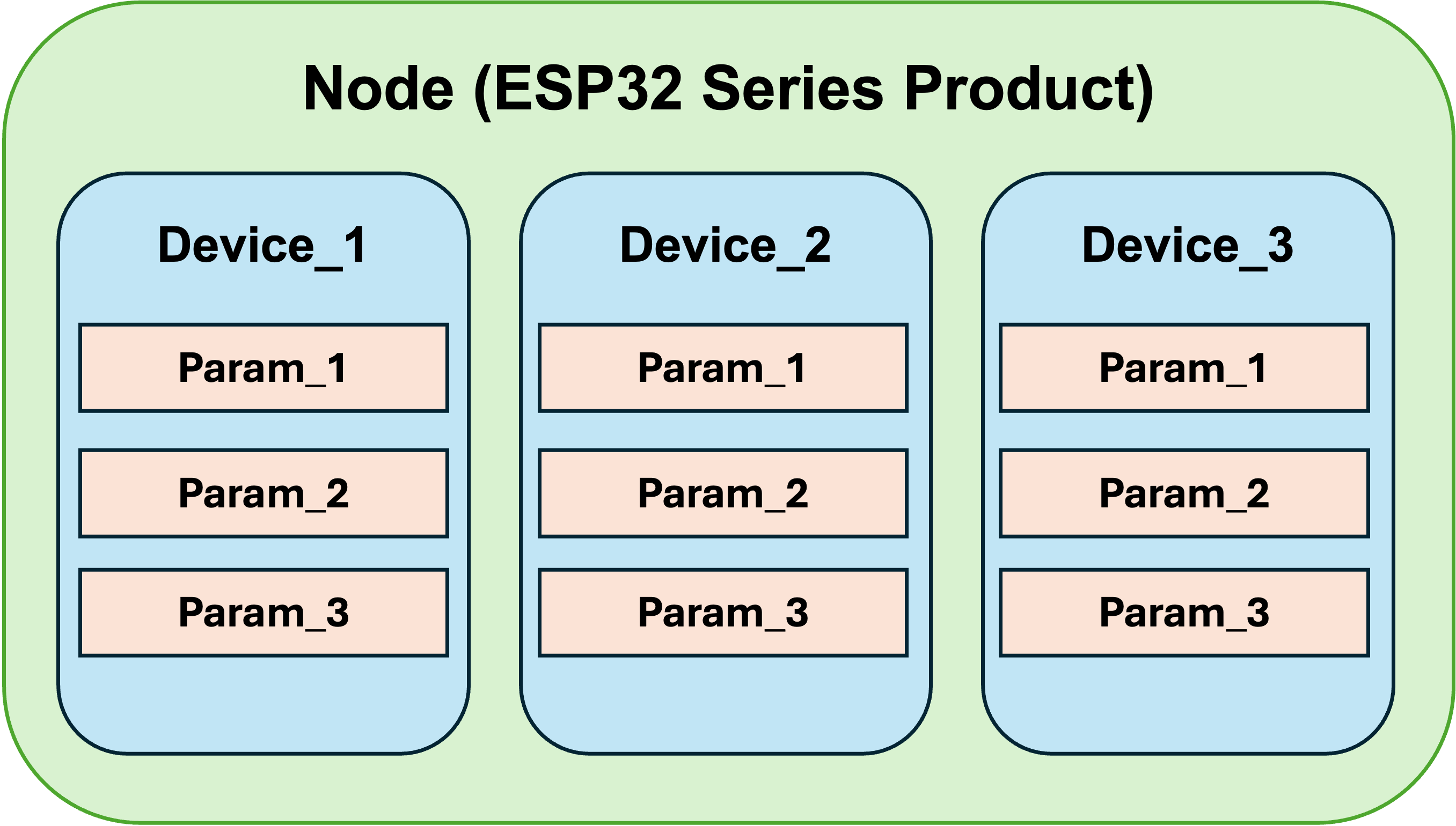Terminologies of ESP RainMaker
This section provides an overview of key terminologies used in the ESP RainMaker ecosystem.

Node
- A node is a single ESP32 series product.
- It has an associated identifier (node ID) and a set of credentials provided by the Claiming service.
- A single node can be exposed to multiple devices.
Node Attributes
Node attributes are optional and custom metadata for a given node, such as a serial number.
Devices
A device is a logical user-controllable entity like a switch, lightbulb, thermostat, temperature sensor, etc. A simple node generally has a single device. However, an ESP32 may also have multiple devices. For example, it might integrate two switches on a single board or act as a bridge for other devices such as BLE sensors. Each device must have a unique name within the node and, optionally, a type.
Device Attributes
Similar to node attributes, device attributes are additional user-defined, read-only name-value pairs that act as metadata for the device. They can include information such as firmware version or serial number. These attributes are particularly useful when there are multiple devices bridged to the node, such as Wi-Fi to wired network, BLE, Zigbee, etc.
Parameters
Parameters refer to control and monitoring parameters of a device, such as the ON/OFF power state, brightness, current/target temperature, etc. All such parameters must have a unique name within the device. They can also have additional fields like value, type, bounds, UI information, etc. The parameter values can be boolean, integer, float, or string.
Service
A service is an entity that is very similar to a device in terms of its structure, with the main difference being that it is designed for operations that may not necessarily need to be visible to the user. A typical example of this is the OTA Firmware Upgrade Service, which can have parameters like URL, status, etc.
Client
A client refers to the application or interface used by the end-user to interact with IoT devices, typically a phone app, CLI, dashboard, Alexa/GVA, etc., through which users can configure, control, and monitor devices via the cloud. The client communicates with the cloud to send commands, receive updates, and display device data.
Cloud
The cloud refers to the ESP RainMaker cloud platform powered by AWS to manage and process data from devices, enabling remote control, monitoring, and management of IoT devices. It acts as the central point for device communication, storing configurations, parameters, and user data.